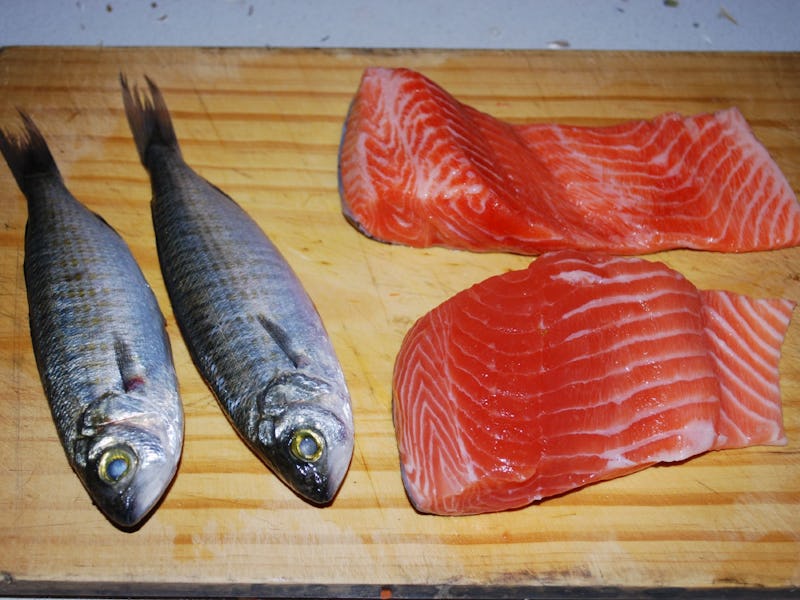How Genetically Engineered Salmon Are Made
The fish are the first genetically modified food animals that the FDA have approved for consumption.

Today, the Food and Drug Administration approved the genetically modified AquAdvantage Salmon for safe consumption. The FDA declared it “as safe to eat as any non-genetically engineered (GE) Atlantic salmon, and also as nutritious.” The fish are the first genetically modified food animals that the FDA has approved for consumption.
The FDA found that the AquAdvantage’s engineered genes did not pose a serious threat to the fish or the consumer — be it human or animal. Those new genes, the FDA says, remain stable over generations, meaning it’s sustainable and not a scientific anomaly. The fish, however, will have to remain in contained spaces — in Panama and Canada — which means they’re not harmful to the environment. The fish cannot currently survive in the wild, so they’re essentially grown somewhere to be food, like plants in a farmer’s field.
The salmon, according to the FDA, are so similar to actual Atlantic salmon that they don’t need to be labeled as genetically modified. AquaBounty, for one, is embracing that ruling wholeheartedly, as it provides a number of salmon recipes on its website.
The AquAdvantage Salmon, which was first created by AquaBounty Technologies in 1989, is “developed by inserting into a fertilized Atlantic salmon egg, a transgene constructed from the growth hormone gene of a related species (Chinook salmon).” This makes the AquAdvantage grow twice as fast as a natural-born salmon, making it more appealing to fish sellers. Part of the FDA’s ruling was that “the sponsor’s claim about faster growth” could, in fact, be verified.